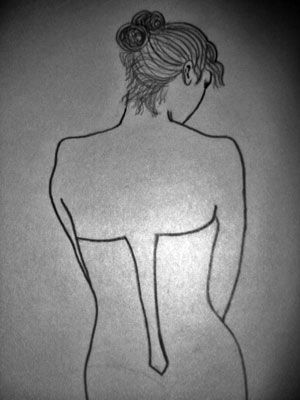All Nonfiction
- Bullying
- Books
- Academic
- Author Interviews
- Celebrity interviews
- College Articles
- College Essays
- Educator of the Year
- Heroes
- Interviews
- Memoir
- Personal Experience
- Sports
- Travel & Culture
All Opinions
- Bullying
- Current Events / Politics
- Discrimination
- Drugs / Alcohol / Smoking
- Entertainment / Celebrities
- Environment
- Love / Relationships
- Movies / Music / TV
- Pop Culture / Trends
- School / College
- Social Issues / Civics
- Spirituality / Religion
- Sports / Hobbies
All Hot Topics
- Bullying
- Community Service
- Environment
- Health
- Letters to the Editor
- Pride & Prejudice
- What Matters
- Back
Summer Guide
- Program Links
- Program Reviews
- Back
College Guide
- College Links
- College Reviews
- College Essays
- College Articles
- Back
The Positive and Negative Effects of Media
Throughout different cultures, the meaning of "beauty" is perceived in various orientations that are spread by the media and different types of advertisements, and can have many mental and physical effects on those surrounded by these images. Desperation to fulfill these unrealistic expectations in a common issue, especially in the Unites States today. People often compare themselves to celebrities, photo-shopped images in advertisements, and even barbies, and think, why can't I look like that? In almost any scenario, these expectations are virtually impossible to live up to.
In almost any advertisement you see, women are most likely to appear young, skinny, and flawless. This is made possible when advertisers use photo-shop and other editing tools to reduce the appearance of blemishes, wrinkles, and other small imperfections. So the question is, why do advertisers go to such great extents to make the models in their ads look more appealing? Well the answer is quite simple. If advertisers use better looking people, this enhances the way their product appears. This is an example of the strategy of linking images, which is commonly used with the media. For instance, whenever I think of the company Geico, I automatically think of the lizard in the commercials for that company. Chances are, if you think of a company and link it to a pleasant image, you are more likely to purchase that product.
Another problem within the media, is how men and women are depicted in advertisements. In our society today, men and women have equal rights and opportunities, and both can pursue in many of the same activities. However, most advertisements do not represent this concept, and often discriminate between the two genders. Women are often shown cooking, cleaning, and shopping. Women are rarely associated in ads that involve working, playing sports, or engaging in outdoor activities. In most cases, men are displayed as strong, athletic, and successful. Why do advertisers create such distinct differences between men and women in their ads? The media is trying to appeal to the general public. If many women enjoy a certain product and only a small portion of men enjoy that product, instead of advertising to the small group of men, the advertiser will try to appeal to the larger portion of women, in order to earn a higher profit.
Within the realm of advertising, several issues appear. Two main problems are unrealistic expectations involving beauty, and distinctions between men and women. The impossible beauty standards are a massive problem, because they can cause people to spend thousands of dollars on plastic surgery and other beauty enhancements. These standards can also cause people to have low self esteem, and can even lead to serious disorders like anorexia and bulimia. That's why I feel this problem needs a solution. I think that advertisements should be more realistic. Photo-shop should rarely be used, imperfections should only be blurred to a certain extent, and the ideal body weight depicted in advertisements should be higher. I also think that men and women should be shown in advertisements in more diverse ways, so that it is clearly evident that these images represent a homogenous society.
All in all, the media can have many positive and negative effects in our day to day lives. It can cause people to be entertained and connect with old friends through social networking sites, yet it can also cause people to have low self confidence and eating disorders. I feel that if people in advertisements more are properly represented in the future, we can have a more positive society that thrives on the beauty of a real person.

Similar Articles
JOIN THE DISCUSSION
This article has 1 comment.
